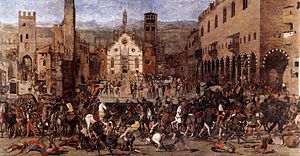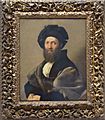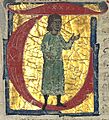Mantua facts for kids
Quick facts for kids
Mantua
Mantova (Italian)
|
|||
|---|---|---|---|
| Comune di Mantova | |||

Panorama of Mantua
|
|||
|
|||
| Country | Italy | ||
| Region | Lombardy | ||
| Province | Mantua (MN) | ||
| Frazioni | Castelletto Borgo, Cittadella, Formigosa, Frassino, Gambarara, Lunetta, Virgiliana | ||
| Area | |||
| • Total | 63.97 km2 (24.70 sq mi) | ||
| Elevation | 19 m (62 ft) | ||
| Population
(31 June 2009)
|
|||
| • Total | 48,353 | ||
| • Density | 755.87/km2 (1,957.69/sq mi) | ||
| Demonym(s) |
|
||
| Time zone | UTC+1 (CET) | ||
| • Summer (DST) | UTC+2 (CEST) | ||
| Postal code |
46100
|
||
| Dialing code | 0376 | ||
| Patron saint | Saint Anselm | ||
| Saint day | 18 March | ||
Mantua is a beautiful city in the Lombardy region of Italy. It is the capital of the province with the same name. In Italy, a "comune" is like a local government area or municipality.
Mantua is famous for its rich history and amazing art. In 2008, its old town (called centro storico) and the nearby town of Sabbioneta were named a World Heritage Site by UNESCO. This means they are very important places for everyone in the world to protect.
For hundreds of years, from 1328 to 1708, the powerful Gonzaga family ruled Mantua. They made it a major center for art, culture, and especially music in Northern Italy. Mantua was known for having one of the most splendid royal courts in Europe during the 15th, 16th, and early 17th centuries.
The city played a big part in the history of opera. The famous composer Monteverdi first performed his opera L'Orfeo here in 1607. Mantua is also mentioned in Shakespeare's play Romeo and Juliet, as the place where Romeo was sent away. The Roman poet Virgil was born near Mantua, and there's a statue of him in a park by the lake.
Mantua is special because it's surrounded on three sides by artificial lakes. These lakes were made in the 12th century to help defend the city. They get their water from the River Mincio, which flows from Lake Garda. The three lakes are called Lago Superiore, Lago di Mezzo, and Lago Inferiore (Upper, Middle, and Lower Lakes).
The area around Mantua has been home to people for a very long time. Scientists have found signs of human settlements from the Neolithic Age (about 5,000 to 4,000 BC) all the way through the Bronze Age and Roman times. In 2017, Mantua was even ranked as the best Italian city for its quality of life and environment!
Contents
Mantua's Location
Mantua is located in the eastern part of the Lombardy region in Italy. It sits right on the River Mincio. The city is about halfway between the big cities of Milan and Venice. It's also south of Verona and east of Cremona.
Mantua Through Time
Mantua started as an island settlement around 2000 BC. It was built on the banks of the River Mincio. Around 600 BC, it became an Etruscan village. The city's name might come from the Etruscan god Mantus.
Later, a Gallic tribe called the Cenomani took over. Then, the Romans fought for control. They linked the city's name to Manto, a character from myths. The famous Roman poet Virgil was born near Mantua in 70 BC.
After the Roman Empire
After the Western Roman Empire fell in 476 AD, Mantua was ruled by different groups. First, the Ostrogoths took control. Then, the Eastern Roman Empire briefly ruled it. After that, the Lombards took over.
In 774, Charlemagne conquered the Lombards, and Mantua became part of the Frankish Empire. Later, it became a part of the Holy Roman Empire.
In the 11th century, Mantua belonged to Boniface of Canossa, a powerful marquis. His daughter, Matilda of Canossa, was the last ruler of her family. Legend says she ordered the building of the beautiful Rotonda di San Lorenzo church in 1082. This church still stands today.
Mantua as a Free City
After Matilda's death, Mantua became a "free commune." This meant it was a self-governing city. It worked hard to stay independent from the Holy Roman Empire. In 1198, Alberto Pitentino changed the course of the River Mincio. This created the "four lakes" around the city, making it even harder to attack. Three of these lakes are still there today.
In 1273, Pinamonte Bonacolsi took control of Mantua. His family, the Bonacolsi, ruled for two generations. They helped Mantua become richer and more artistic.
The Gonzaga Family's Rule
On August 16, 1328, Luigi Gonzaga led a public revolt. He took power from the Bonacolsi family. Ludovico Gonzaga became the new leader. The Gonzaga family would rule Mantua for centuries.
The Gonzagas built new city walls and improved the city. During the Italian Renaissance, they made Mantua a major center for art and learning. Marquis Gianfrancesco Gonzaga brought Vittorino da Feltre to Mantua in 1423. He opened a famous school called the Casa Giocosa.
Isabella d'Este, a very important woman of the Renaissance, married Francesco II Gonzaga in 1490. She was a great collector of art. She created her famous studiolo (a private study room) and asked famous artists like Mantegna to paint for her. It was unusual for a woman to have such a space back then.
In 1433, Gianfrancesco I was made Marquis of Mantua. This was a big step up for the family. Later, in 1459, Pope Pius II held an important meeting in Mantua. Under Ludovico and his family, the famous Renaissance painter Andrea Mantegna worked as the court painter. He created some of his best works here.
Mantua Becomes a Duchy
Federico II Gonzaga became the first Duke of Mantua in 1530. He got this title from Emperor Charles V. Federico asked the artist Giulio Romano to build the famous Palazzo Te. This beautiful palace is on the edge of the city.
In the late 16th century, the composer Claudio Monteverdi came to Mantua. He worked for the court of Vincenzo I Gonzaga. He was a singer and musician before becoming the music director.
From Gonzaga to Austrian Rule
In 1627, the main line of the Gonzaga family ended. Mantua slowly became less powerful under new rulers from a French branch of the family. A war broke out, and in 1630, an army attacked Mantua. They also brought the plague, which caused much suffering.
The last Duke, Ferdinand Carlo IV, was not a good ruler. He cared more about parties than governing. When he died in 1708, the Gonzaga family lost Mantua forever. The city then came under the rule of the Habsburgs from Austria.
Under Austrian rule, Mantua started to improve again. Many new buildings were constructed, including the Royal Academy of Sciences and the Scientific Theatre.
Napoleon's Influence
In 1796, during the Napoleonic Wars, Napoleon Bonaparte's French army attacked Mantua. The city was besieged for a long time before it surrendered in 1797. Mantua later became part of Napoleon's Kingdom of Italy. In 1810, Andreas Hofer, a leader who fought against Napoleon, was killed in Mantua.
Joining Italy
After Napoleon's rule, Mantua returned to Austria in 1814. It became an important fortress city in northern Italy. However, people in Mantua wanted to be part of a united Italy. There were revolts against Austrian rule.
In 1866, Italy fought against the Austrian Empire. Austria was defeated, and Mantua finally joined the newly formed Kingdom of Italy.
Mantua in the 20th Century
During World War II, a prisoner-of-war camp was located in Mantua. It held soldiers from different countries.
Famous Buildings and Places
The Gonzaga family loved art and culture. They invited many important artists to Mantua. Even though some artworks are now in other places, Mantua still has many beautiful buildings. They are great examples of Italian architecture.
Religious Buildings
- Basilica of Sant'Andrea: This church was started in 1462 by Leon Battista Alberti. Its big dome was finished much later in the 18th century.
- Duomo (Cathedral of St Peter the Apostle): Mantua's main cathedral.
- Rotonda di San Lorenzo: A round church, built in 1082, that was renovated in 2013.
- Church of San Sebastiano: Another historic church.
- Museo diocesano Francesco Gonzaga: An art museum with sacred artworks, armor, coins, and paintings.
- Santa Paola: A church built in the early 15th century. It holds the tombs of five members of the Gonzaga family.
- Santa Maria del Gradaro: A church built starting in 1256.
Other Important Buildings
- Palazzo Te (1525–1535): A beautiful palace built by Giulio Romano. It was the summer home of Frederick II of Gonzaga. It now has a museum inside.
- Palazzo Ducale: The famous home of the Gonzaga family. It's a huge complex of buildings, courtyards, and gardens. It includes the Castle of St. George with the Camera degli Sposi (Bridal Chamber), a room with amazing frescoes by Andrea Mantegna.
- Palazzo d'Arco: A grand palace built in 1746. It has a museum and an art gallery with works by famous painters.
- Bibiena Theater: Also known as the Teatro Scientifico. It was designed in 1767. On January 16, 1770, a 13-year-old Wolfgang Amadeus Mozart played a concert here!
- House of Mantegna: The home of the artist Andrea Mantegna, built in 1476. It's now used for art exhibitions.
Getting Around Mantua
By Car
You can reach Mantua by car using the A4 Highway (Milan-Venice) and then the A22 Highway (Brennero-Modena).
By Train
Mantova railway station opened in 1873. You can take trains to and from cities like Milan, Verona, and Modena. There's also a daily high-speed train connection to Rome.
By Air
The closest airport is Verona-Villafranca Airport. You can take a bus from the airport to Verona Porta Nuova and then a train to Mantua.
By Bus
Local bus services are provided by APAM. There are buses for getting around the city and to nearby towns and villages.
Mantua's Food
Interesting Facts About Mantua
- In 2005, a survey said Mantua was the most "liveable" city in Italy. This was based on things like pollution, quality of life, and public transport.
- The composer Claudio Monteverdi worked for the Duke of Mantua. He wrote his famous Vespro della Beata Vergine here.
- Since 1997, Mantua has hosted the Festivaletteratura. This is one of the most famous literary events in Europe.
- In 2007, the skeletons of two people, known as the Lovers of Valdaro, were found near Mantua. They are thought to be 5,000 to 6,000 years old. They look like they are embracing each other.
- In May 2012, an earthquake damaged some historic buildings in Mantua, including the Palazzo Ducale. But it was repaired and reopened quickly.
- The composer Antonio Vivaldi worked in Mantua from 1718 to 1720. Mantua inspired him to write his famous "Four Seasons" concertos.
Mantua's Sister Cities
Mantua is twinned with several cities around the world. This means they have special friendly relationships:
 Charleville-Mézières, France
Charleville-Mézières, France Nevers, France
Nevers, France Pushkin, Russia
Pushkin, Russia Weingarten, Germany
Weingarten, Germany Madison, U.S.
Madison, U.S. Ōmihachiman, Japan
Ōmihachiman, Japan Oradea, Romania
Oradea, Romania
Famous People from Mantua
- Baldassare Castiglione (1478–1529): A writer and diplomat, famous for his book "The Book of the Courtier."
- St. Aloysius Gonzaga (1568–1591): A Jesuit saint.
- Claudio Monteverdi (c. 1567–1643): A very important composer who worked in Mantua.
- Tazio Nuvolari (1892–1953): A legendary motorcycle and racecar driver.
- Sordello (13th century): A famous poet from the Mantua area.
- Virgil (70 BCE–19 BCE): A classical Roman poet, born near Mantua.
Mantua in Stories and Plays
- In William Shakespeare's play Romeo and Juliet, Romeo is sent away from Verona to Mantua after a fight.
- In Shakespeare's play The Taming of the Shrew, some characters are from Mantua.
- Giuseppe Verdi's opera Rigoletto is set in Mantua. There's even a building in Mantua that people call "Rigoletto's house."
- The Italian mini-series The Trial (Il processo) on Netflix was mostly filmed in Mantua. It's a fictional story about a local prosecutor solving a murder case.
Mantua's Weather
| Climate data for Mantua (1994–2017) | |||||||||||||
|---|---|---|---|---|---|---|---|---|---|---|---|---|---|
| Month | Jan | Feb | Mar | Apr | May | Jun | Jul | Aug | Sep | Oct | Nov | Dec | Year |
| Mean daily maximum °C (°F) | 6.1 (43.0) |
9.3 (48.7) |
14.7 (58.5) |
18.8 (65.8) |
23.9 (75.0) |
28.1 (82.6) |
30.3 (86.5) |
30.0 (86.0) |
24.9 (76.8) |
18.8 (65.8) |
11.8 (53.2) |
6.6 (43.9) |
18.6 (65.5) |
| Daily mean °C (°F) | 3.0 (37.4) |
5.1 (41.2) |
9.4 (48.9) |
13.6 (56.5) |
18.5 (65.3) |
22.5 (72.5) |
24.6 (76.3) |
24.2 (75.6) |
19.7 (67.5) |
14.6 (58.3) |
8.8 (47.8) |
3.9 (39.0) |
14.0 (57.2) |
| Mean daily minimum °C (°F) | 0.0 (32.0) |
0.8 (33.4) |
4.1 (39.4) |
8.4 (47.1) |
13.2 (55.8) |
16.9 (62.4) |
18.9 (66.0) |
18.4 (65.1) |
14.4 (57.9) |
10.5 (50.9) |
5.7 (42.3) |
1.3 (34.3) |
9.4 (48.9) |
| Average precipitation mm (inches) | 49 (1.9) |
45 (1.8) |
46 (1.8) |
56 (2.2) |
68 (2.7) |
58 (2.3) |
47 (1.9) |
58 (2.3) |
59 (2.3) |
69 (2.7) |
72 (2.8) |
56 (2.2) |
683 (26.9) |
| Source 1: Climi e viaggi | |||||||||||||
| Source 2: Istituto Superiore per la Protezione e la Ricerca Ambientale (precipitation 1951–1980) | |||||||||||||
Images for kids
See also
 In Spanish: Mantua para niños
In Spanish: Mantua para niños














